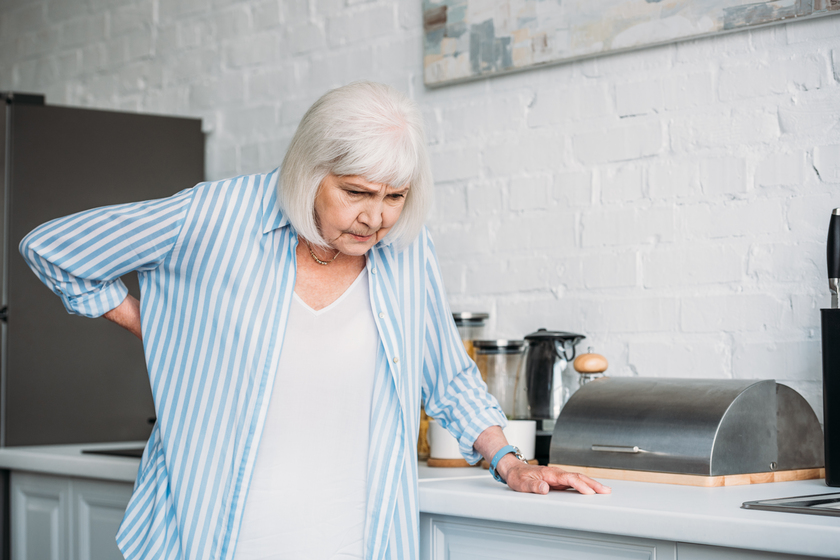The journey of aging can be a beautiful and graceful experience. However, a concern that lingers in the minds of many is the potential reason for losing independence as they age. This concern often influences choices, behaviors, and even one’s quality of life. By understanding the primary cause and implementing preventive measures, individuals can lead autonomous lives even in their golden years.
Primary Reason for Declining Independence: Reduced Physical Mobility
One of the foremost reasons people face a loss of independence is a decrease in physical mobility. This encompasses challenges in walking, standing, or engaging in various daily activities without assistance. Reduced mobility can be attributed to several factors:
- Aging Muscles and Joints: Over time, muscles lose their mass and strength. Similarly, joints can become stiff and less flexible. This natural aging process can affect one’s ability to move with the same agility and freedom as in younger years.
- Chronic Illnesses: Arthritis, osteoporosis, or heart diseases can influence mobility. Managing these conditions effectively is essential for maintaining movement independence.
- Balance Issues: Balance-related problems increase the risk of falls, making individuals hesitant to move around independently.
Strategies to Maintain Independence
Understanding the challenges is the first step. The next is to focus on strategies and proactive measures to mitigate the risks of reduced mobility.
Embrace Physical Activity
Regular physical activity is paramount. Engaging in exercises tailored to one’s health and age can significantly boost muscle strength, joint flexibility, and overall mobility. Walking, swimming, or gentle yoga can make a huge difference. Many retirement communities offer tailored exercise programs to encourage residents to stay active.
Early Intervention and Regular Health Check-ups
It is essential to keep a close eye on one’s health. Regular health check-ups can detect early signs of conditions that may affect mobility. Early intervention can slow the progression of many diseases and, in some cases, even reverse them.
Adopt a Balanced Diet
Nutrition plays a critical role in maintaining physical health. For instance, a diet rich in calcium and vitamin D supports bone health, reducing the risk of osteoporosis. Including plenty of protein can aid in muscle mass maintenance.
Mind-Body Connection
Activities that enhance the mind-body connection, like tai chi or meditation, can significantly improve balance and coordination. These activities also have the added benefit of reducing stress and promoting mental well-being.
Safety Measures
Taking precautions at home or within a retirement community can prevent unnecessary injuries. Non-slip mats, grab bars in restrooms, or wearing shoes with good grip can make environments safer.
Stay Socially Active
A robust social life can indirectly support independence. Being socially active encourages movement and engagement in various activities. Participating in retirement community events or joining clubs can provide ample socialization and physical activity opportunities.
Leverage Technology
Modern advancements in technology can support independence. Wearables that track health metrics, apps that remind individuals to take medications, or even virtual reality platforms for exercise can be beneficial.
Finding the Right Retirement Community
Deciding to move to a retirement community can be a strategic step towards preserving independence. Such communities are designed to cater to the unique needs of residents, ensuring their environment supports and promotes autonomy. Features to consider when choosing the right community include:
- Accessibility and Design: Look for communities prioritizing mobility and accessibility in their design.
- Activity Programs: Communities that offer regular physical activity programs can be a plus. This not only supports physical health but also provides opportunities for social interaction.
- Healthcare Access: Proximity to healthcare providers or regular health check-ups within the retirement community can be advantageous.
- Engagement Opportunities: A community that emphasizes social engagement, be it through retirement community events, clubs, or other group activities, can benefit holistic well-being.
Education and Continuous Learning
One often overlooked strategy to maintain independence in the golden years is the power of continuous learning. Here is how and why it makes a difference:
- Stimulates the Brain: Engaging in new learning experiences, be it attending lectures, reading new books, or even taking up a new hobby, helps stimulate the brain. This mental stimulation can delay cognitive decline, ensuring individuals remain sharp and alert.
- Promotes Adaptability: Learning new skills or technologies means that individuals are better equipped to adapt to changes. This adaptability can be crucial in maintaining independence, especially in an ever-evolving world.
- Boosts Self-confidence: Gaining new knowledge or mastering a new skill can boost confidence. This enhanced self-confidence can translate into a greater willingness to try new things, explore new places, and continue leading an active senior independent living.
The fear of losing independence can loom, but individuals can lead fulfilling and autonomous lives with the right strategies even as they age. Investing time and effort into maintaining physical health, staying socially active, and choosing the right environment, like a suitable retirement community, can make a difference. Embrace the journey of aging with grace, understanding, and proactive action.







